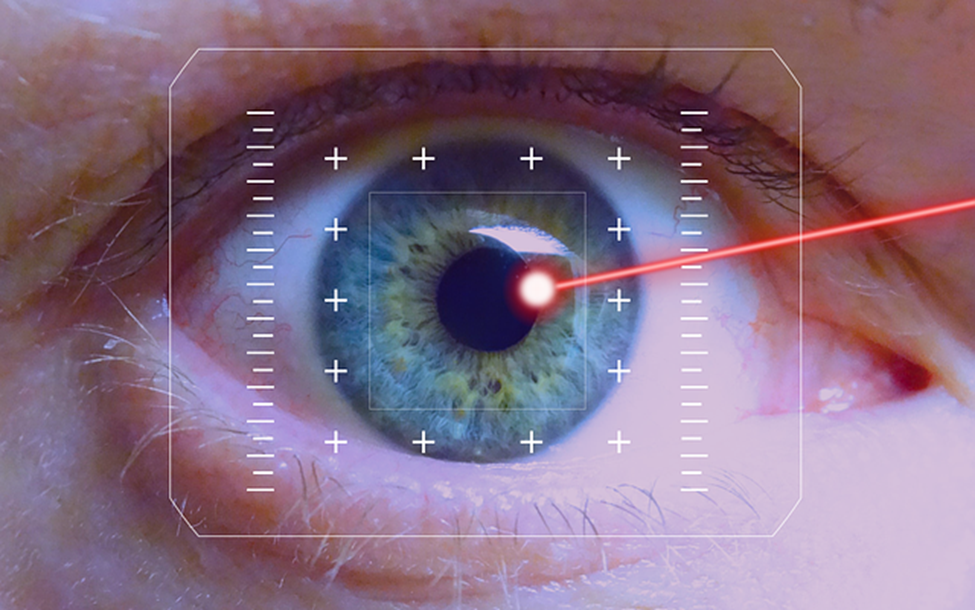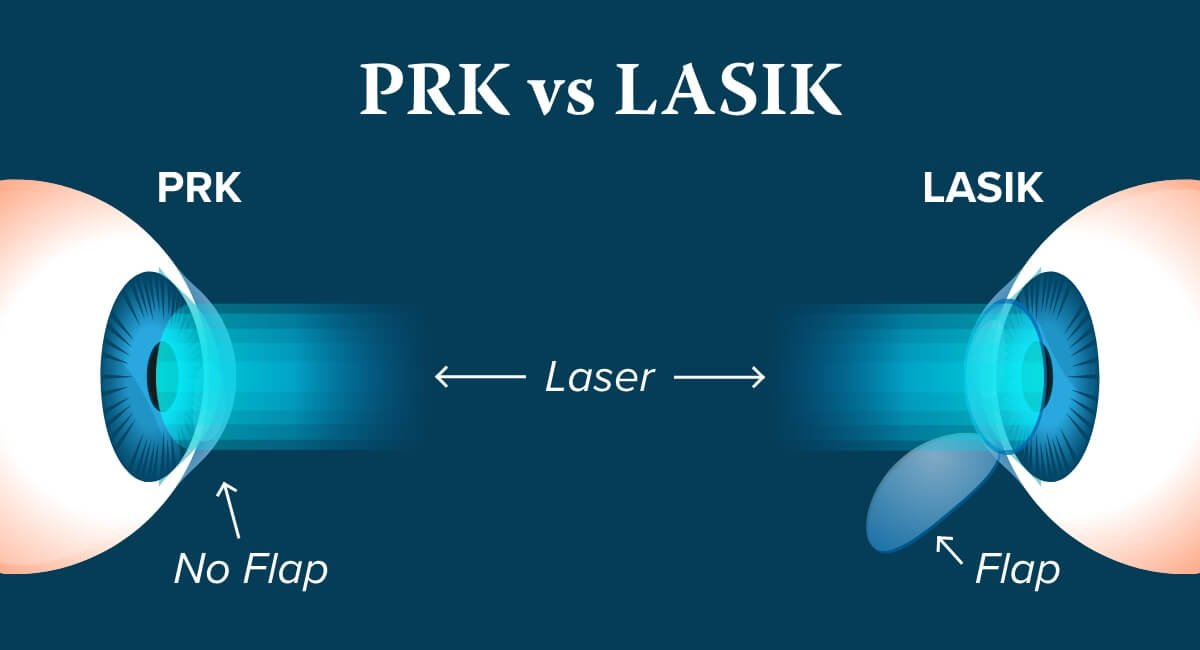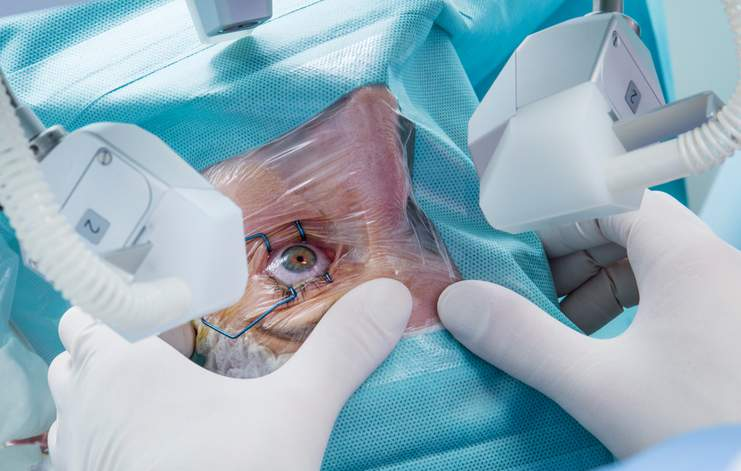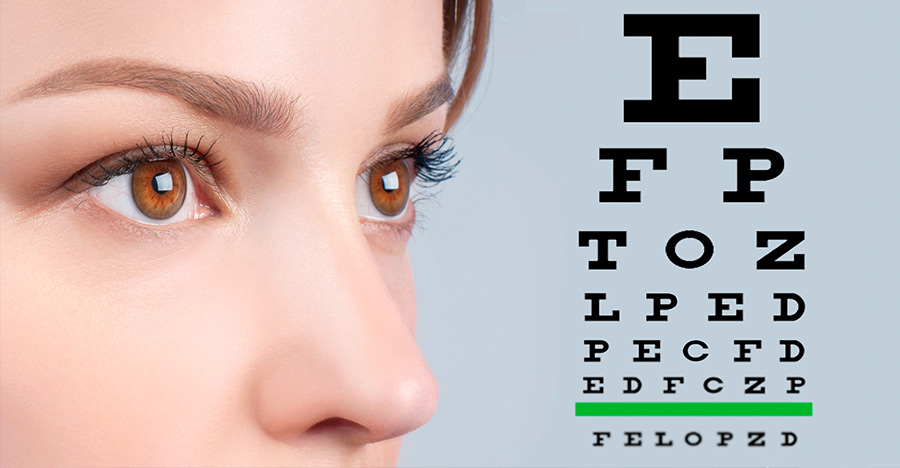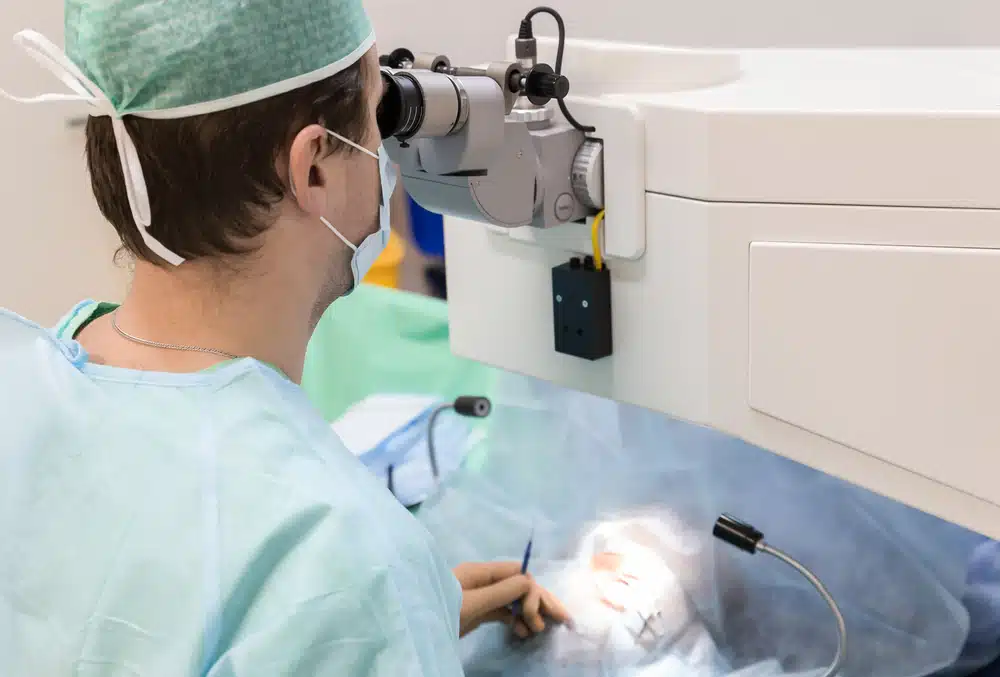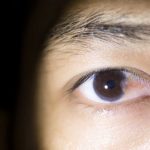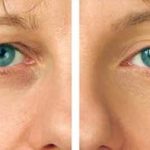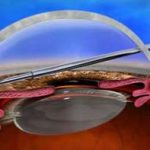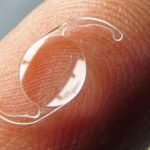PRK EYE SURGERY
Photorefractive keratectomy (PRK) is a type of refractive surgery. This kind of surgery uses a laser to treat vision problems caused by refractive errors. You have a refractive error when your eye does not refract (bend) light properly.
With PRK, your ophthalmologist uses a laser to change the shape of your cornea. This improves the way light rays are focused on the retina. PRK is used to treat myopia (nearsightedness), hyperopia (farsightedness) and astigmatism.
The goal of photorefractive keratectomy is to correct your refractive error to improve your vision. PRK may reduce your need for eyeglasses or contact lenses. In some cases, it may even allow you to do without them completely.
How Is PRK Performed?
In PRK procedure, a thin layer of the surface of the cornea (epithelium) is removed and the cornea is reshaped with an excimer laser to improve the way light enters the eye and is focused on the retina. PRK is an outpatient procedure in which anesthetic drops are used to numb the patient’s eye and make the procedure painless for him/her. The surgeon uses a device to hold the eyes open while doing the surgery. The precision of the laser is computer-programmed based on the type of refractive error. Generally, the surgeon uses the laser for less than one minute. After correcting the cornea, a temporary contact lens is placed in the eye as a bandage to improve healing and comfort.
PRK vs LASIK
Both PRK and LASIK (laser-assisted in situ keratomileusis) are laser eye surgery techniques that correct refractive errors to improve the vision. PRK was developed before LASIK, but this doesn’t mean that PRK is old-fashioned; they are both widely utilized today. These two procedures are used to modify the cornea, but in different ways. In a PRK, the surgeon cuts away a very thin layer of the cornea and uses a laser to reshape the layers beneath and correct any irregularity while in a LASIK procedure the surgeon uses a blade to create a small flap in the cornea, which he raises up to reshape the layers beneath using a laser and then puts it back in place.
Who can have a photorefractive keratectomy (PRK)?
You have to meet certain requirements in order to have a PRK. In addition to having a conversation with your ophthalmologist (eye doctor) about what to expect, you need to:
- Have healthy corneas.
- Have healthy eyes in general.
- Have realistic expectations about the PRK. Your surgeon will discuss what to expect and not expect.
- Be 18 years old, or older.
- Have an eye prescription that hasn’t changed in the previous year.
You’re not likely to qualify for a PRK if you:
- Have advanced glaucoma.
- Are pregnant.
- Are breastfeeding.
- Have cataracts.
- Have an eye infection, dry eye syndrome or blepharitis.
- Have scars in your eyes.
- Have a refractive error that keeps changing.
- Have cornea injuries or diseases.
- Have a disease that affects healing, an allergy or uncontrolled diabetes.
What kind of healthcare provider performs a photorefractive keratectomy (PRK)?
You may work with a whole team for your photorefractive keratectomy:
- Ophthalmologists (who study and treat eye diseases).
- Ophthalmic surgeons.
- Nurses.
- Optometrists (healthcare providers who specialize in the eyes in general).
- Technicians.
What happens during the photorefractive keratectomy (PRK) procedure?
Your PRK will happen in six steps:
- Your surgeon will numb your eyes using eye drops.
- They’ll put a holder in your eye to stop you from blinking.
- Your epithelium — the outer layer of your cornea — will be removed using a brush, blade, laser or an alcohol solution.
- The ophthalmologist will then use a laser to reshape your cornea.
- Next, the surgeon will give you nonsteroidal anti-inflammatory eye drops, antibiotic drops and steroid drops.
- A clear contact lens is usually placed at the end of surgery to reduce irritation during the healing process. It works like a bandage.
What should I expect after the photorefractive keratectomy (PRK) procedure?
After the PRK, you should:
- Get some rest.
- Avoid physical activity for as long as your surgeon recommends.
- Take a few days off of work, if necessary.
You may have some eye pain for two or three days, so take an over-the-counter pain reliever or get a prescription for eye drop pain relievers. You may also be prescribed other medications. Be sure to wear sunglasses outside (for as long as you’re instructed) to prevent scarring on your corneas.
Your vision will improve after three to five days, but meanwhile, it may be blurry. It may take a month of more before you see big improvements with your vision.
PRK Recovery
After a PRK procedure, the surgeon will apply a special contact lens as a bandage to help the eye heal. You’ll have mild discomfort, irritation, and watering eye for 1 to 3 days and some degree of pain, which can be relieved by painkilling eye drops or over-the-counter pain medicines.
Be sure to arrange for someone to drive you home after the procedure. You might need to take a few days off to relax and take plenty of rest. Try to avoid strenuous activities for one week following the surgery.
You will have blurry vision for the first 3-5 days. As your cornea heals, your vision will improve, but it may take 1 month or longer before you can benefit from the full results.
Your doctor may prescribe certain eye drops to be used during the recovery period after PRK, including antibiotic drops, anti-inflammatory drops, and artificial tears for eye dryness.
Ophthalmologists advise patients to wear sunglasses for a while when going outside because sun exposure may cause corneal scarring and vision problems after surgery.
What are the advantages of a photorefractive keratectomy (PRK)?
Talk with your healthcare providers about the risks and benefits of a PRK (photorefractive eye surgery) before your procedure. Advantages include:
- PRK can accurately correct nearsightedness. Approximately 90% of PRK patients have 20/20 vision without glasses or contact lenses one year after the surgery. Over 95% have 20/40 or better (without glasses or contacts).
- PRK may be preferable to LASIK in certain patients with thinner corneas or with corneal surface irregularity since PRK disrupts less corneal tissue than a comparable LASIK surgery.
- PRK is technically simpler than LASIK and utilizes the same modern laser treatment systems. For this reason, some refractive surgeons prefer PRK to LASIK.
What are the disadvantages, risks and possible side effects of the photorefractive keratectomy (PRK) procedure?
All surgeries include risks, and a photorefractive keratectomy is no different. After the procedure you may have:
- Scars on your cornea.
- Corneal haze, which is a cloudiness on your cornea.
- An infection.
- A glare and halo when you’re around lights, especially at night.
- Eye pain, irritation and/or watering.
- Sensitivity to light.
- Hazy vision. A medicine called mitomycin C is sometimes used during surgery to minimize the risk of haze after a PRK.
- Regression, which means that the treatment becomes less effective.
- Delayed healing.
Very, very rarely, patients have experienced worse vision or even blindness.
The outcome is not completely predictable due to variations in individual wound healing, and a small number of patients may still require glasses or additional surgery to achieve their best vision.
PRK Cost in Iran
A PRK procedure costs about $900 to $1,600 for both eyes in Iran, which is much more reasonable than in other countries. Different clinics and hospitals in Iran have slightly different PRK prices. To get price quotes for a PRK surgery in Iran, please feel free to give us a call or message.

